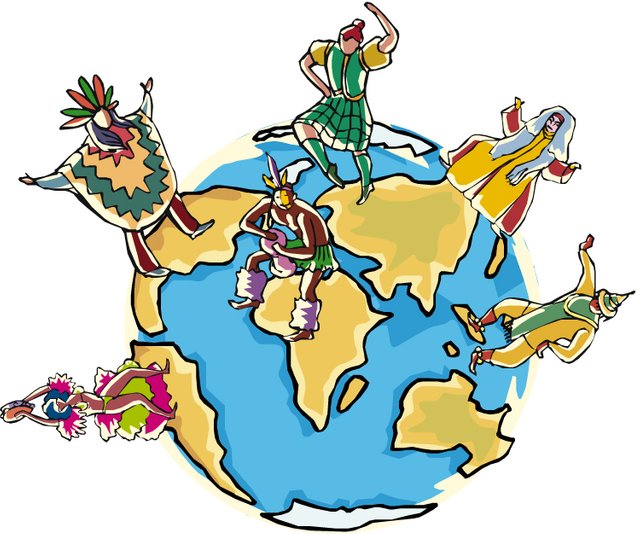Communication: Part 5 - Language and Symbols

Communication: Part 5 - Language and Symbols
Language and Symbols
Introduction
In the previous posts Part 3 and Part 4, I have explained the meaning of symbolism and pointed out that it is a means of communication. Here we look more closely at language and symbolism. Language is based on people's capacity for symbolism and involves the communication of ideas and actions through sounds in a context of time, place and occasion. Speech consists of auditory symbols (ie: phenomena that we can hear). Writing presents a further level of symbolism in that it presents visual symbols of these auditory symbols.
Still, the relationship between a word and what it symbolises is arbitrary. For example, there is no obvious relationship between the sounds forming the word "dog" and the animal being represented. It is a matter of convention that a particular sound conveys a particular idea. Words, therefore, symbolise objects and abstract concepts. Furthermore, languages are symbolic because a word often stands for a category of events or things, rather for than a single event or thing. For instance, the word "dog" symbolises the idea "dog", but on its own, it does not refer to a particular dog or type of dog. The ability to abstract categories of objects or concepts is essential for communication, and to this end, language tends to divide and combine the wide range of objects or concepts in the real world into a series of units.
Paralinguistic communication
Paralinguistic communication, also called paralanguage, is described as communication that accompanies language and provides additional messages about it. The term "metacommunication" has also been used to refer to these messages, which enable a recipient to interpret a message. For instance, they tell the recipient whether a message is to be taken seriously or lightly, or whether the speaker is being friendly or sarcastic. Examples of such paralinguistic features are gestures, facial expressions, the tone of voice and spatial movement. The tone of voice makes a considerable difference to the meaning of a verbal message. Consider the difference in meaning between the phrase, "Thank you very much", when spoken in an angry tone and when spoken in a friendly tone. A paralinguistic feature, therefore, indicates to the recipient of a message how that message should be received. Metacommunication is not a form of language; it accompanies the spoken language and has little meaning without it. It cannot be studied as a system of communication, but only as an adjunct to language.
Non-linguistic communication
Through non-linguistic communication, messages are transmitted non-verbally. I will provide a few examples to illustrate this point:
Artefacts: These are analysed to understand the messages transmitted by, for example, clothing, jewellery, tattoos, skin piercing and other visible body modifications. Think about the messages conveyed by someone who wears expensive jewellery and designer clothing, or by young people with several ear studs or earrings, navel rings, rings or studs in the nose and lips, and so on.
Haptics: This refers to the analysis of touch, for instance, handshakes, pats on the back or head, kisses and hugs. In different cultures, touch may have different meanings. In some cultures, touching a child's head such as ruffling its hair may be interpreted as being affectionate, while in Balinese culture this would be frowned upon. In Western culture, a firm handshake is interpreted as indicative of power, self-confidence or a strong character, while a limp handshake is interpreted as being effeminate or indifferent. In many cultures, it does not matter which hand is used to perform a certain function, while in certain cultures, especially the Muslim culture, the left hand is regarded as unclean and Muslims, therefore, avoid using their left hand to eat, handle money or perform other social interactions.
Chronemics: This refers to different ways time is understood and used to communicate ideas in different cultures. In Western culture, time is often considered to be inflexible and people organise their lives according to fixed time schedules. Being an hour late for an appointment is frowned upon, while being early or on time indicates respect for the person visited and says something positive about the visitor. In the West, clocks are often found in town squares and on buildings. Certain other cultures regard time as being more flexible, and social interactions are more highly valued than time schedules. On the other hand, whether a person is on time for an appointment or not may communicate motions of power. For example, a person may keep to a strict time schedule when dealing with superiors, but may keep subordinates waiting.
Proxemics: This is the study of the way societies use physical space. Researchers identify three different kinds of space:
- The built environment, which includes homes and other buildings and how these are placed. Different cultures have different ideas about how many rooms a house should have and how these rooms should be arranged in relationship to one another.
- Semi-fixed-feature space (ie: the features are not permanent), which deals with the arrangement of furniture, equipment and decoration in an environment. Think about the placement of chairs and sofas in your lounge or Tv room, or where you receive visitors.
- Interpersonal distance and ideas about privacy: Ideas on interpersonal space differ between cultures and are communicated during a conversation by means of eye contact, posture, the loudness of voice, physical contact and distance between speakers. Edward Hall studied the ways in which varies societies use physical space to communicate about personal relationships. Americans, for example, prefer to have a kind of envelope of private space around them, which should not be violated, except in circumstances of intimacy such as lovemaking. When someone moves closer to them, they move further away. In cases where it is impossible to avoid intrusion into this private space, such as in a crowded bus or in a lift, they avoid eye contact with others and may separate themselves by engaging in an activity such as reading a newspaper. In contrast, Latin Americans stand much closer to another during the conversation. There are also different distances regarding communication between lovers, relatives, friends, strangers and persons of opposite sex.
Kinesics: This concerns the study of body movement and gestures as means of communication. Ray Birdwhistel, one of the main researchers in this field, argues that the use of features such as eyebrow movement, facial expression and posture are learned behaviours that communicate messages (such as interest, boredom, scepticism) and are, accordingly, an important part of culture. For example, he detects a difference in the way English people and Americans generally position their eyebrows; the English tend to position their eyebrows high on the forehead, something the Americans interpret as a look of surprise.
Art: Art is primarily a means of communicating ideas, beliefs and attitudes within a sociocultural context, mainly through the use of familiar cultural symbols. Our purpose here is not to explain different forms of art, but to briefly consider different types of non-linguistic art (namely visual art, music and dance) as means of communication. (Other art forms, such as literature and storytelling, are obviously linguistic forms of communication).
- Visual art, such as paintings and sculptures, communicate on two levels:
First, there is the message conveyed by the creator of the art.
Second, there is the message read into it by its audience.
These messages are not always the same, but they may be similar in cases where the persons involved have the same sociocultural orientation. In the case of different cultures, however, the interpretation may differ considerably from the meaning intended by the artist. To an American tourist, a carved West African mask may be just a nice wall decoration, but it has a deep spiritual meaning for West Africans who wear it during rituals. Art may also convey an intentional message, as in the case of Nguni beadwork. Among the Zulu and Swazi, for instance, beads mark the various stages in the development of love and beadwork designs are outward signs of the stage that the relationship has reached, as they indicate to the young man how far he can go in his courtship. Among the Xhosa speaking people, beadwork also serves as a means of communication between sexes, as well as having other even more important purposes, as pointed out by Costello (1990:13):
Beadwork is concerned with the organisation of Xhosa society in which there is a series of clearly defined levels through which each member of the society passes passage from one level to the next is signalled by changes in ornamentation, including beadwork...Beadwork can also communicate the wearer's rank, wealth, status, and in some instances, his or her profession, for example, a diviner. Together with traditional songs and dances, beadwork serves to unify the community and to record the customs and history of a people that does not have a tradition of literacy - Costello (1990:13)
Music: Instrumental music, not songs, has the power to communicate emotions, but it is not a code that is universally understood. When the composer and audience are from different sociocultural backgrounds, the emotions conveyed are not the same as when composer and audience share the same sociocultural orientation.
Dance: Communicates on various levels, namely:
- dance through rhythmic movement, which evokes a response in the audience
- visually through what the viewers see
- aurally through the music people hear
- by means of mime, as in the case of the Kangaroo dance of Australian Aborigines
The meaning conveyed by dance may be metaphorical or abstract, or the message may be largely unconscious.
End of Part 5
Thank you for reading.
Images are linked to their sources in their description and references are stated below.
Authors and Text Titles
RG Twala 1951: African Studies
D Costello 1990: Beadwork and cultural significance amongst Xhosa speaking peoples
H Applebaum 1987: Introduction: symbolic and humanistic Anthropology
WA Haviland 2008: Anthropology: The Human Challenge 12th Edition
C Delaney 2004: Investigating Culture
Beattie, J 1964: Other cultures
FS Miller 1979: Introduction to cultural anthropology
Seymour-Smith 1986: Macmillan dictionary of anthropology
Haviland 2002: Cultural anthropology
C Geertz 1973: Interpretation of Culture
C Levi-Strauss 1977: Structural Anthropology vol 2
JJ Honigman 1976: The development of anthropological ideas
S Nanda & PL Warms 2004: Cultural Anthropology















You received a 10.0% upvote since you are not yet a member of geopolis.
To read more about us and what we do, click here.
https://steemit.com/geopolis/@geopolis/geopolis-the-community-for-global-sciences-update-3
If you do not want us to upvote and comment on your posts concerning earth and earth sciences, please reply stop to this comment and we will no longer bother you with our love ❤️
Hey there!:) i' ve just came cross your account for the first time but i really enjoy it! i like to learn new stuff about anthropology as i love to travel. so i stay and follow! :) cheers!
Hi @k-a-s-i-a
Thank you so much for the comment, staying, following and the support, it is really really appreciated. Thank you!
There are times where non-linguistic communication speaks louder than linguistic communication.
For example; when I was a kid, someone offered me snacks. Even though my mum told me to feel free to collect, but the look on her face suggests a strong "NO" :). I quickly took the "non-linguistic NO" from her face instead of the "linguistic YES" from her words :D
Nice piece buddy
We all know that look @samminator!!!
Great comment, thank you buddy, you always make me smile:)
Wow! I really enjoy reading your posts. They are very comprehensive. Regarding the arbitrariness of language, the only words that seem not to have an arbitrary relation with the non-linguistic world they represent are the onomatopeic ones as they imitate the sound of the things that they define.
In communication , as it is in translation non-linguistic meaning (paralanguage) is of tantamount importance .
Another example about chronemics I would like to add , if you'll excuse me, is about the notion of time in the Navajo culture . Compared to the mainstream culture, they seem to be slow at everything. Acomplishing things takes the time it takes . For them, hurrying is an unfamiliar concept. Thanks again.
Thank you for this brilliant comment!!!!
I love this, I am exactly like this now days:)
Woo. It's Good explanation! indisputable, that symbol is a medium of communication in one community, but we must be careful in interpreting a certain symbol of society, because the same symbol may have a very different meaning. For example, shaking the head for the Indians is meaningful yes / agree or disagree, it depends on the expression of his/her face. But for the Indonesian shaking head is just has mean not or disagree.
Hi!!!
I knew about the indian head movement, didn't know about the indonesian one though, thank you so much for the enlightment:)
Wooow, great in-depth look at all the different types of communications.
I especially liked this part, i've been hearing my whole life how Japanese ppl are always on time and that it's rude to them and for them to be late, while in my country being 5 minutes late to anything, is normal, actually, sometimes it's expected!
Are you an anthropologist in real life zest?
Hi @teutonium:)
Thank you for the great comment.
I am actually an Archaeologists but our degree requires anthropology as a joint major :)
Artworker, have many tons of smart media on pra modern to say something to us, this media like stone, manuscript, painting on canvas. But wht should we do to understand the mean behind all of media from artworker, who know? Some of little information was publised by anrtropology media. It is really hard to see
I am trying my best to understand your comment, but I can't sorry.
Thank you, our planet still keep a thousand secret from us, we have to be aware, it takes more than anthropology studies to study it.
@zest apakah anda seorang dosen
Not sure what this meant, even tried google translate
I find it amazing that some things in the ancient civilizations are so similar. Maybe they all just originate from the same place?